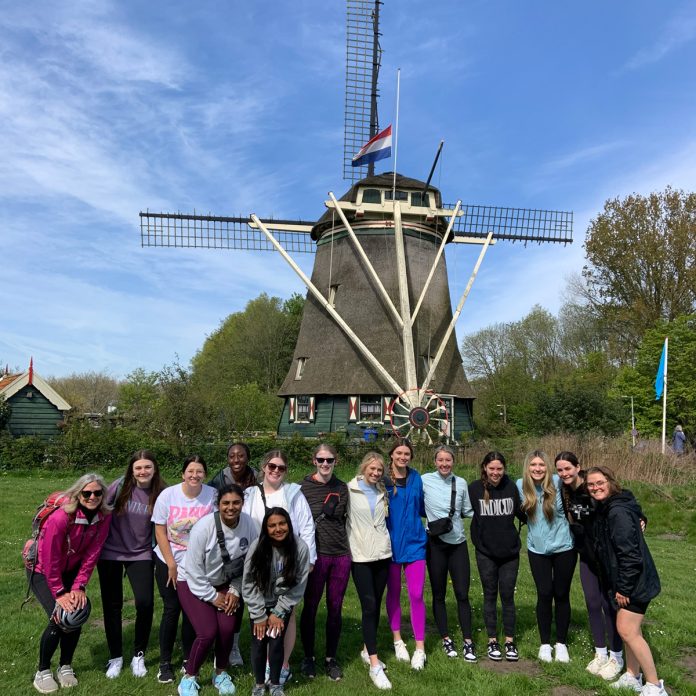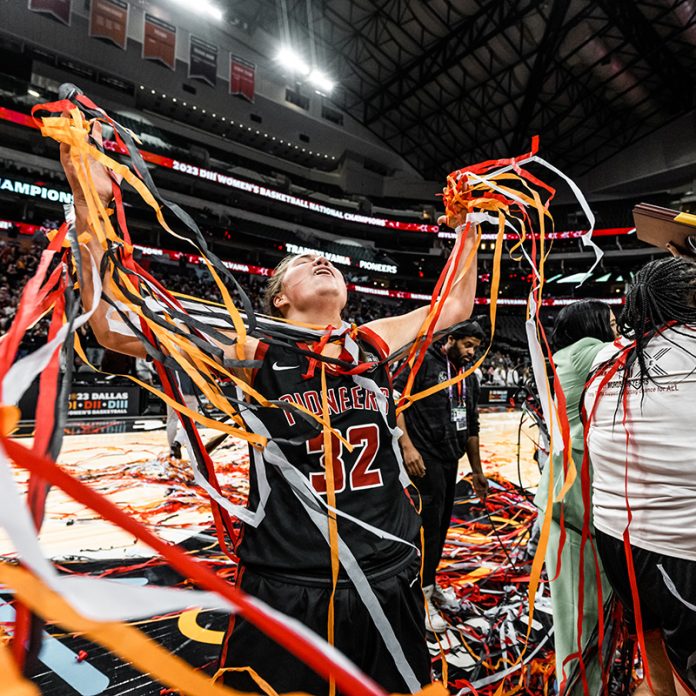
Liberal arts in a digital age
by Alexandria Lopez
Recent headlines have been filled with worries about artificial intelligence systems and their impact on both education and the job market. Higher education professionals nationwide have made much ado about ChatGPT and its potential impact on classroom learning. While these technologies do pose new challenges, institutions like Transylvania are well positioned to explore the benefits offered by this new wave of technology while sidestepping its potential pitfalls.
In a world that is increasingly tech driven, the skills fostered by a liberal arts education are more important than ever. While artificial intelligence can currently produce text and images, its output is only equivalent to the quality of work put into its neural network. Humans will still be needed to assess the systems’ output and improve it through iterative adjustments.
People who will use AI tools well are people who are good at creative and critical thinking, as well as posing good questions — all of the intellectual skills that come out of a liberal arts education.
Rebecca Thomas, vice president for academic affairs and dean of the university
“People who will use AI tools well are people who are good at creative and critical thinking, as well as posing good questions — all of the intellectual skills that come out of a liberal arts education,” said Rebecca Thomas, vice president for academic affairs and dean of the university.
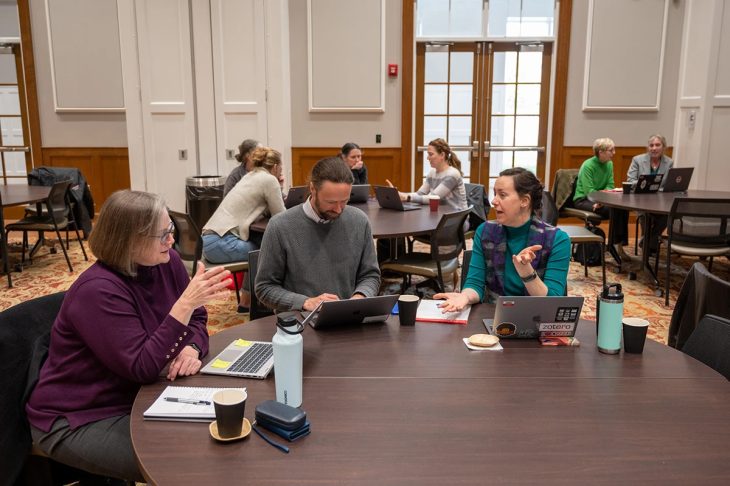
AI in the classroom
Rebecca Thomas, who holds a Ph.D. in computer science from Stanford University, recently polled faculty members on their adoption of AI in the classroom. She found that Transy faculty have already found a wide variety of purposes for the new technology. Some professors use AI as a basic brainstorming aid to gather prompts for classroom discussion or writing exercises, while others use it for more specific tasks, like art professor Kurt Gohde, who asked students to use ChatGPT to produce scripts for his video production course.
“I think it’s a mistake to prevent students from using AI,” Thomas said. “We want to help them use it well.” To that end, several faculty members are also having students test out AI as a writing tool, with the ultimate goal of teaching students to use the technology ethically and effectively.
This spring, Digital Content and Technology Integration Specialist Julie Perino hosted a workshop for faculty and students to assist them in this task. Co-facilitated by Miami University professors Heidi A. McKee and James E. Porter, the workshop focused on the facilitators’ current research into AI composing technologies, as well as the ethical implications of AI-based writing systems.
McKee and Porter suggested that faculty consider integrating AI writing into their courses in ways that encourage students to reflect on what’s working and what needs human intervention.
“Once students are looking at it, you can have an entire conversation about the voice it’s creating and if that’s the voice you want to create,” Perino explained, noting that artificial intelligence can function to show students their potential deficiencies as writers.
If you integrate working with ChatGPT early on, it can become a tool in the student’s arsenal and not just something they fall back on.
Julie Perino, Digital Content and Technology Integration Specialist
Thomas agreed, comparing concern regarding the introduction of AI into the writing process to the alarm that was felt when students began to use calculators in mathematics classes. She noted that many faculty members plan to incorporate process writing into their syllabi, a proven pedagogical technique designed to deepen students’ conceptual learning and understanding by requiring them to reflect on their writing process and choices — the kind of work that even the best machine cannot do.
“AI can write smooth prose, but it can’t have good deep thought. It can produce images that are interesting or accurate, but it can’t necessarily compose an image with an aesthetic sense or talk about what an image means,” Thomas said. “I think that the output of an AI system can fool you for a little while into thinking it’s human work, but really not for very long.”
Preparing for the ‘Conceptual Age’
Not only can new technologies like ChatGPT serve as a teaching tool, but the tech boom also creates new skill sets for students to develop in order to be well prepared for a data-driven job market. According to recent data from the Bureau of Labor Statistics, data science is projected to be the second-fastest-growing career field requiring a bachelor’s degree over the next eight years — followed closely by statistics in fourth place. Whether students elect to major in these fields, the ability to produce and understand quantitative information is becoming a common job requirement across the board. Twenty years ago, an English major might not have needed to know how to analyze statistics for their future career, but such skills are in high demand today. “Knowing how to analyze and visualize data is also really important,” Thomas said. “Data analysis shouldn’t be limited to students in fields we think of as quantitative.”
To that end, the university has developed a new data analytics minor scheduled to launch in the fall (see sidebar for more information). Designed to complement a wide array of majors, the minor will help students understand how to collect, organize and use data effectively and ethically, as well as to consider how the widespread availability of enormous amounts of data impacts our lives — for “big data” can also come with some big problems.
“One of the issues we’re preparing our students for is unimaginable oceans of information — not all of which is accurate and some of which is malicious,” Thomas said. “We want our students to not just be consumers of that ocean of information; we want them to be able to produce accurate, thoughtful, well-reasoned information in all kinds of media forms.”
Transy has long been preparing students to do just that. The university’s Digital Liberal Arts initiative was established in 2017 to increase students’ digital fluency, provide access to cutting-edge technology, and give graduates a leg up in the job market.
Co-directed by professors Timothy Polashek and Emily Goodman, the initiative has created unique opportunities for Transy students — establishing a Digital Arts Technology lab to grant students access to professional-grade tools used to produce digital media; hosting Studio 300, an international digital art and music festival; and supporting a series of talks about data visualization in concert with Creative Intelligence.
While majors in music technology and digital arts and media rely heavily on digital tools, the Digital Liberal Arts initiative encourages all undergraduates to express their creativity — a soft skill employers continue to value — using technology as a conduit. Combining these soft skills with the ability to learn fostered by the liberal arts and an understanding of technology — its use as a tool and what it is and isn’t capable of doing — Transy students can master both the flexible thinking and digital know-how they need to succeed in a changing world.
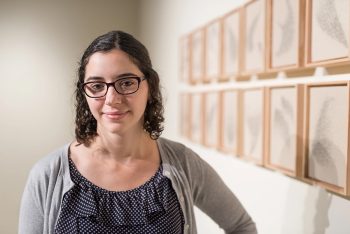
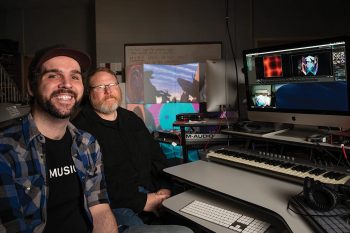
Liberal arts enriches new data analytics minor
by John Friedlein
Transylvania University has launched a new minor to prepare students for the rapidly growing field of data analytics, which has surprising connections to the liberal arts.
The program is helping students develop a range of skills — from computation to storytelling.
“As the world becomes more interconnected and data driven, it is imperative that liberally educated people have the necessary tools to evaluate the validity of, and make meaningful use of, enormous quantities of data,” mathematics professor Michael Kelly said.
In summer 2022, Kelly and professors Mike LeVan and Sarah Bray attended a data science workshop in Colorado sponsored by the National Science Foundation. Then they incorporated what they learned into the new minor.
Their proposal highlights how having a foundation in the liberal arts can enrich data analytics, helping students address today’s problems in ways that are interdisciplinary, holistic and socially responsible.
This ties into the school’s embrace of the digital liberal arts more generally.
“With the increasing amount of our activities being tracked, analyzed and used to predict future actions, data analytics now plays a crucial role in understanding the world around us,” Kelly said.
The variety of elective options for the minor points to its interdisciplinary nature: Ecology, Entrepreneurship, Linear Algebra, etc. If students have already taken any of these courses, they can count toward the minor. The new, required classes, like Introduction to Data Analysis and Statistics, will roll out through the 2024-25 school year, Bray said.
Also, a capstone course has students gather and analyze data sets using resources such as machine learning.
Those graduating with the minor will have developed a solid range of skills, including: communicating the results of data analysis; wrangling, curating and managing large data sets; and understanding the field’s statistical and mathematical foundations.
Transylvania graduates are already excelling in data analytics. For instance, Tim Meko ’06 creates visuals to help readers make sense of complex data as deputy graphics director for The Washington Post.

